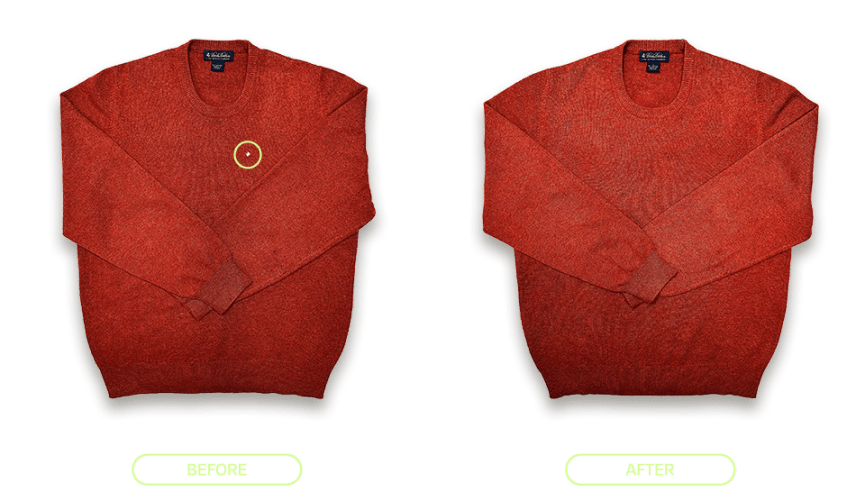INVISIBLE MENDING REPAIR
Restore damaged clothing items without a trace of previous damages and wear.
Invisible mending is a meticulous textile repair technique that seamlessly restores damaged fabric to its original state. It involves several crucial steps:
STABILIZATION: The damaged area is stabilized to prevent further unraveling or distortion. This may involve securing loose threads and reinforcing the surrounding fabric.
THREAD PREPARATION: The selected threads are prepared for weaving by threading them onto a specialized needle or bobbin, ensuring they are ready for precise integration into the damaged area.
WEAVING: Using specialized tools, the reweaver meticulously weaves the new threads into the damaged area. This process involves replicating the original weave pattern and aligning the new threads with the existing fabric.
BLENDING: As the new threads are woven into the damaged area, they are carefully blended with the surrounding fabric to ensure a seamless integration. This involves adjusting the tension and placement of the threads to achieve a natural appearance.
PRESSING & STEAMING: The repaired garment may be pressed or steamed to set the new threads and blend them further with the existing fabric. This helps to ensure a smooth and even finish.
Invisible Mending : BEFORE & AFTER
Here’s another great example of our work. The Brooks Brothers cashmere garment pictured below was sent in with holes throughout the body. Our experts were able repair the holes invisibly so there is no trace of any previous damage-keeping our promise to restore the garment seamlessly to its original state.

HOW MUCH DOES INVISIBLE MENDING COST?
EXTENT & COMPLEXITY OF DAMAGE:
Addressing larger or intricate damages in garments through invisible mending requires additional time and expertise, potentially impacting the overall service cost. Complex repairs demand meticulous attention to detail and specialized weaving techniques to achieve seamless results
WEIGHT & MATERIAL OF GARMENT:
The cost of invisible mending may vary depending on the weight and type of material used in the garment. Delicate, rare, or fine knit fabrics may require specialized techniques and matching threads, potentially increasing the expense of the repair.
INVISIBLE MENDING TECHNIQUE:
Different invisible mending techniques, such as French mending or reweaving, come with varying levels of complexity and labor requirements. The chosen technique can influence the overall cost of the repair service.
AVAILABILITY OF MATCHING THREADS/MATERIALS:
Finding or creating matching threads or materials is crucial for achieving seamless repairs. If specific threads or materials are rare or challenging to procure, it may result in additional costs for sourcing or customization.


FACTORS WE CONSIDER WHEN EVALUATING INVISIBLE MENDING REPAIR COST
SIZE
01
AND EXTENT
OF THE DAMAGE
DIFFICULTY
02
HARVESTING
YARN OR THREAD
LOCATION
03
OF THE
DAMAGE
FABRIC
04
THICKNESS
AND WEIGHT
CURRENT SERVICE:





